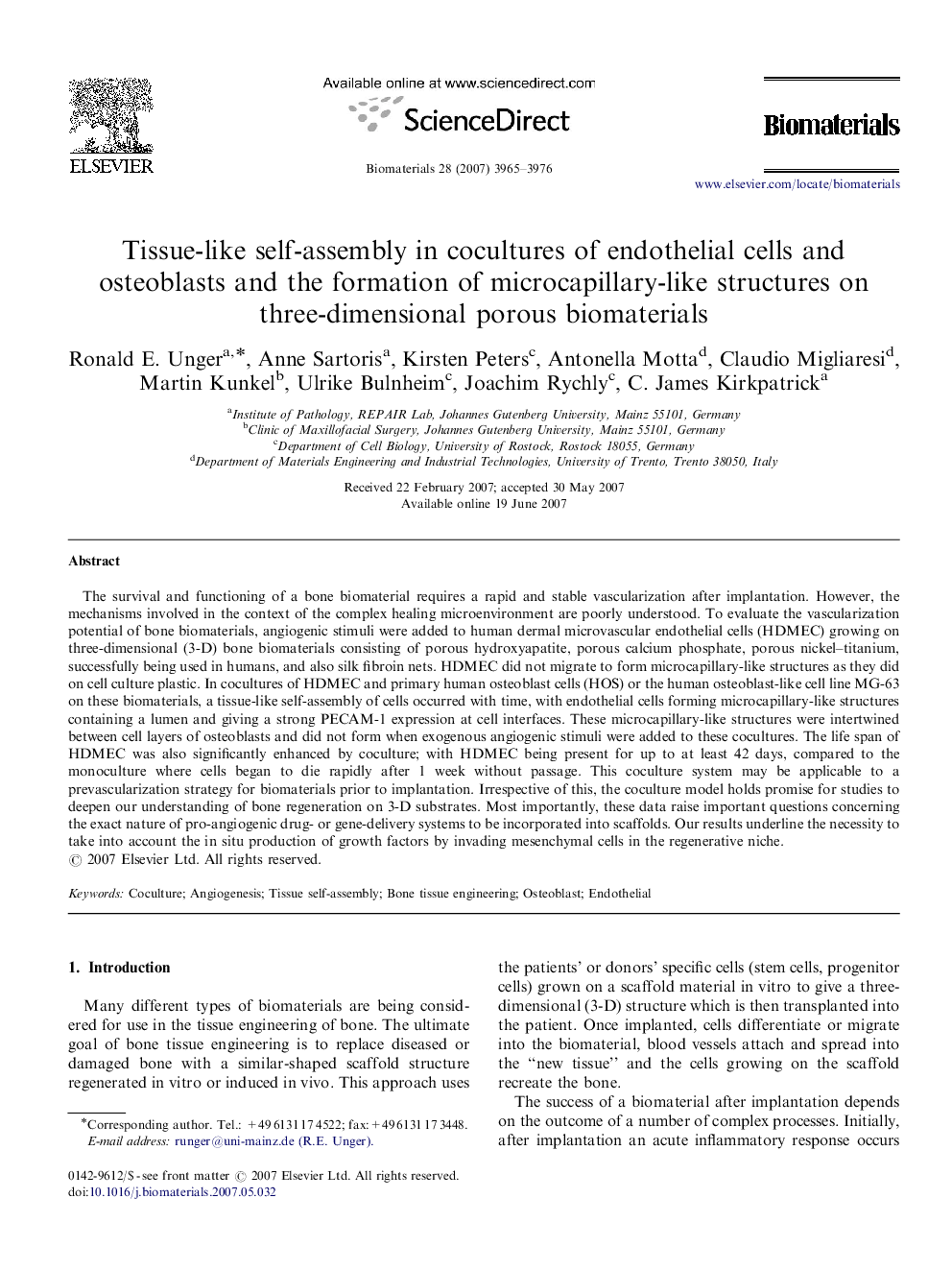| کد مقاله | کد نشریه | سال انتشار | مقاله انگلیسی | نسخه تمام متن |
|---|---|---|---|---|
| 10338 | 680 | 2007 | 12 صفحه PDF | دانلود رایگان |

The survival and functioning of a bone biomaterial requires a rapid and stable vascularization after implantation. However, the mechanisms involved in the context of the complex healing microenvironment are poorly understood. To evaluate the vascularization potential of bone biomaterials, angiogenic stimuli were added to human dermal microvascular endothelial cells (HDMEC) growing on three-dimensional (3-D) bone biomaterials consisting of porous hydroxyapatite, porous calcium phosphate, porous nickel–titanium, successfully being used in humans, and also silk fibroin nets. HDMEC did not migrate to form microcapillary-like structures as they did on cell culture plastic. In cocultures of HDMEC and primary human osteoblast cells (HOS) or the human osteoblast-like cell line MG-63 on these biomaterials, a tissue-like self-assembly of cells occurred with time, with endothelial cells forming microcapillary-like structures containing a lumen and giving a strong PECAM-1 expression at cell interfaces. These microcapillary-like structures were intertwined between cell layers of osteoblasts and did not form when exogenous angiogenic stimuli were added to these cocultures. The life span of HDMEC was also significantly enhanced by coculture; with HDMEC being present for up to at least 42 days, compared to the monoculture where cells began to die rapidly after 1 week without passage. This coculture system may be applicable to a prevascularization strategy for biomaterials prior to implantation. Irrespective of this, the coculture model holds promise for studies to deepen our understanding of bone regeneration on 3-D substrates. Most importantly, these data raise important questions concerning the exact nature of pro-angiogenic drug- or gene-delivery systems to be incorporated into scaffolds. Our results underline the necessity to take into account the in situ production of growth factors by invading mesenchymal cells in the regenerative niche.
Journal: Biomaterials - Volume 28, Issue 27, September 2007, Pages 3965–3976